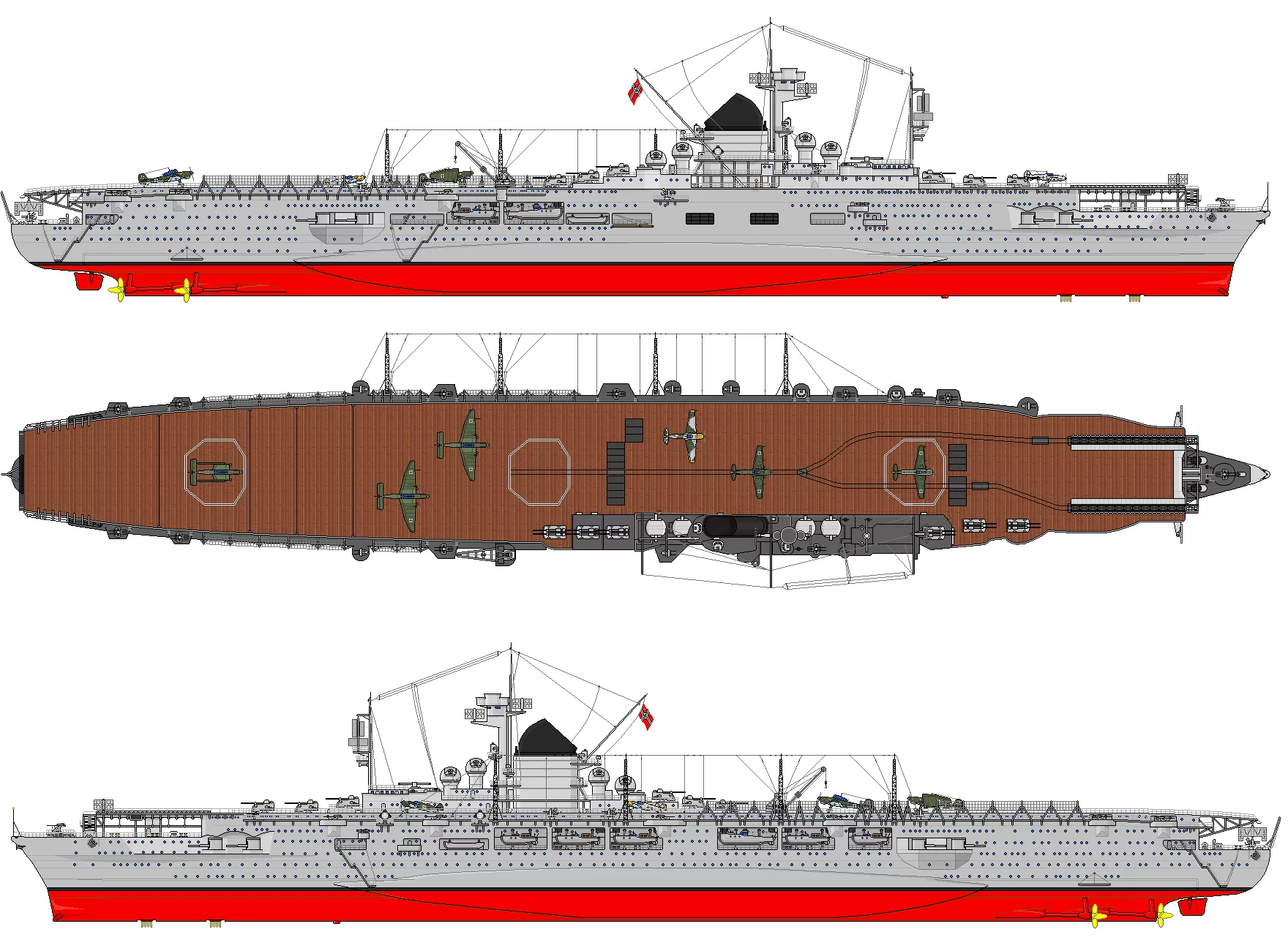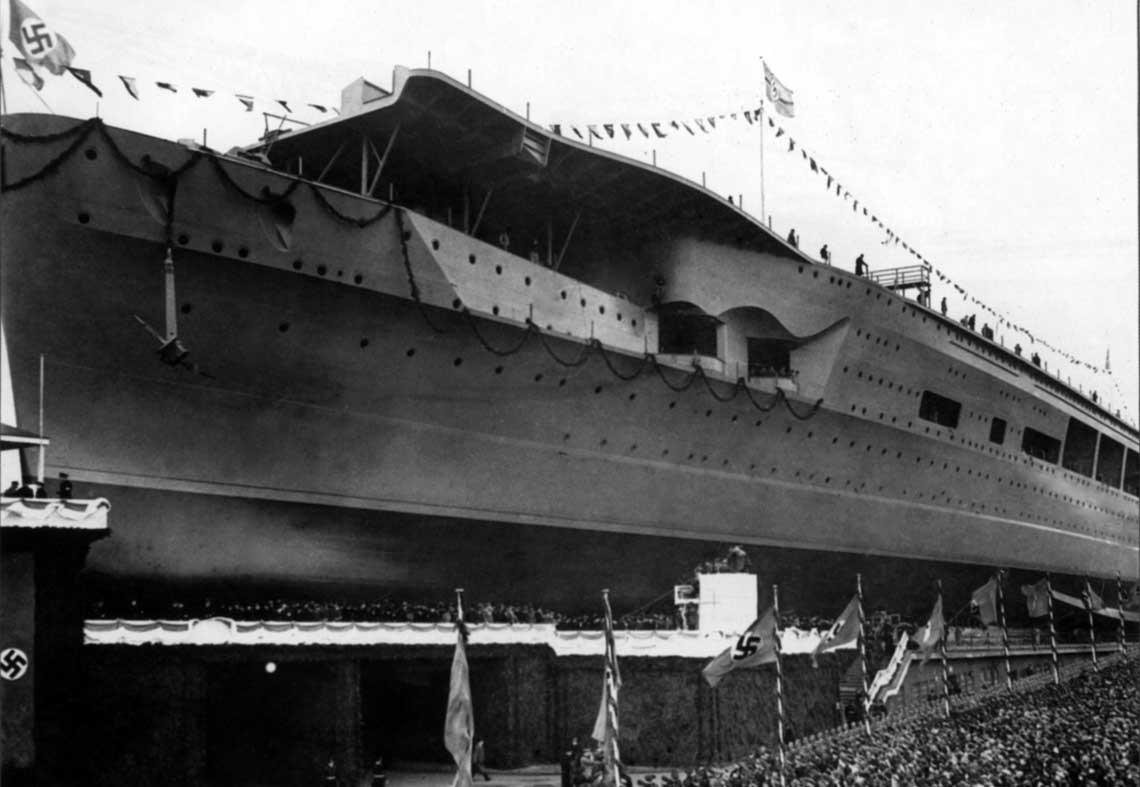
Aircraft carrier Graf Zeppelin and its airborne aircraft
Content

Ar 197 V3 prototype after repainting.
Almost simultaneously with the order for the construction of an airborne multi-purpose aircraft, Arado received an order from the Technisches Amt des RLM for the preparation of a single-seat airborne fighter.
Arado Ar 197
Since biplanes were the standard airborne fighter aircraft at the time in countries such as Japan, the US or the UK, the RLM also wanted to protect itself if the then-revolutionary program to develop modern low-wing fighters, such as the Messerschmitt Bf 109, failed. For pilots aboard an aircraft carrier, a biplane could be more useful as it will have better handling characteristics at the cost of lower performance.
Arado offered a traditional solution based on the Arado Ar 68 H land biplane concept. Single-engine, single-seat fighters. The car, equipped with a covered cab and a BMW 68 radial engine with a maximum power of 132 hp, developed a speed of 850 km / h and a practical ceiling of 400 m.
Ar 197 had an all-metal construction with a duralumin casing - only the rear part of the fuselage was covered with fabric; the wings had a different span and were connected to each other by N-shaped struts; the cockpit was completely glazed. First prototype, Ar 197 V1, W.Nr. 2071, D-ITSE flew at Warnemünde in 1937. The aircraft was equipped with a 600-cylinder in-line liquid-cooled Daimler-Benz DB 900 A engine with a maximum power of 4000 hp. at a height of XNUMX m, equipped with a three-bladed variable pitch propeller. The vehicle was not armed and had no marine equipment (landing hook, catapult mounts).
Second prototype, Ar 197 V2, W.Nr. 2072, D-IPCE, later TJ+HJ was powered by a BMW 132 J nine-cylinder radial engine with a maximum output of 815 hp, equipped with a three-bladed variable pitch propeller. The aircraft received full marine equipment and was tested at E-Stelle Travemünde. Another prototype was the Ar 197 V3, W.Nr. 2073, D-IVLE, powered by a BMW 132 Dc radial engine with a maximum takeoff power of 880 km. In addition to naval equipment, the machine also had a fuselage attachment for an additional fuel tank with a capacity of 300 liters and small arms, consisting of two 20-mm MG FF cannons with 60 rounds of ammunition per barrel, placed in the top panel and firing outside the fuselage. screw circle, and two 17 mm MG 7,92 synchronous machine guns with 500 rounds of ammunition per barrel, located in the upper front of the fuselage. Four (two under each wing) hooks for bombs weighing 50 kg each were placed under the lower wing. Due to the good performance achieved by the Ar 197 V3 prototype, three more pre-production variants with BMW 132 K radial engines with a maximum takeoff power of 960 km were ordered and built, which were designated as: Ar 197 A. -01, W.Nr. 3665, D-IPCA, later TJ + HH, Ar 197 A-02, W.Nr. 3666, D-IEMX, later TJ + HG and Ar 197 A-03, W.Nr. 3667, D-IRHG, later TJ+HI. These aircraft went through various trials and trials, most notably on the E-Stelle Travemünde which was carried out as early as 1943.
Messerschmitt Bf 109
In the initial period of the development of German airborne aviation, it was decided that in addition to a single-seat fighter, which could simultaneously perform the tasks of a light dive bomber, a long-range two-seat fighter capable of intercepting enemy vehicles at a great distance from their own ships, and at the same time perform reconnaissance missions, would be required. The second crew member was supposed to be engaged mainly in navigation and maintaining radio communications.
